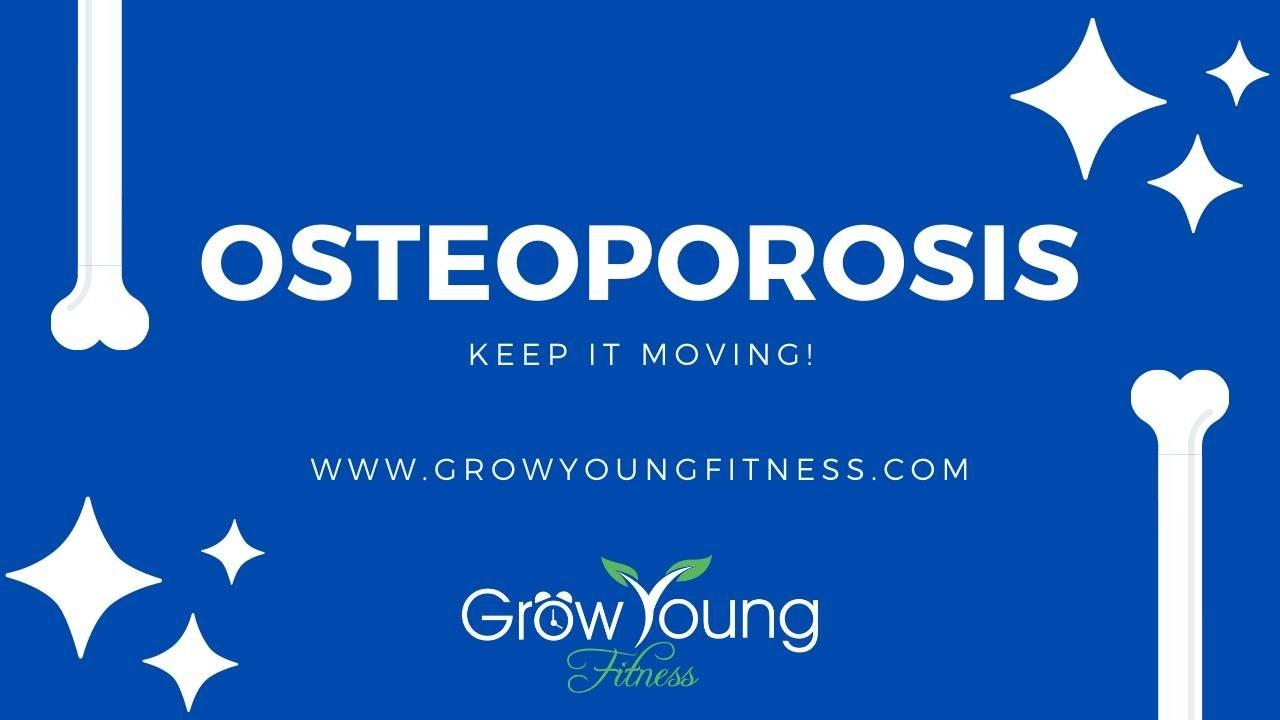Osteoporosis
Oct 06, 2020
Exercising with osteoporosis:
How to stay active the safe way
One of the biggest misconceptions people often have is that exercise will lead to fractures. In fact, using your muscles helps protect your bones.
Osteoporosis is one of the top causes of disability in older women. Weak bones often result in fractures in the hip and spine. These injuries can severely impair your mobility and independence.
How can you reduce your risk? Exercise is the answer! (The Grow Young Fitness Founders’ Club Workouts do a wonderful job with helping osteoporosis.)
Did you know, certain types of exercise can actually strengthen muscles and bones. Also, adding in exercises that isolate specific areas of your body can help you to improve your balance and prevent those falls.
It's never too late to start exercising.
Regular physical activity can:
- Increase your muscle strength
- Improve your balance
- Decrease your risk of bone fracture
- Maintain or improve your posture
- Relieve or decrease pain
Exercising, if you have osteoporosis, means finding the safest routines for you. There’s no one-size-fits-all prescription. That is why Grow Young Fitness offers you a huge variety of options. It is important to develop an exercise routine where you can customize the workouts to meet your individual needs and ability level.
That is exactly what Grow Young Fitness is all about!
These types of activities are often recommended for people with osteoporosis:
1- Strength training exercises, especially those for the upper back such as the strength workouts, foundation workouts, and cardio workouts.
2- Weight-bearing aerobic activities - All Grow Young Fitness workouts are weight-bearing.
3- Flexibility exercises - We stretch with every Grow Young Fitness workout!
4- Stability and balance exercises - Every Grow Young Fitness workout has a focus on stability and balance built right in!
Do not get discouraged. Every person's body is different. Try different workouts to find out what exercises are appropriate for you. Start slow and steady.
That is what makes Grow Young Fitness so unique. There is so much variety that you simply cannot go wrong, especially when following the Founders’ Program.
Strength training
Strength training includes the use of free weights, resistance bands, or your own body weight. Strength training helps to strengthen all major muscle groups, especially spinal muscles to help improve posture. Resistance training can also help maintain bone density.
Resistance training should be customized to your ability and tolerance, especially if you have pain. Proper form and technique are crucial to prevent injury and get the most from your workout. If you are feeling any pain, you should modify those moves until you are stronger.
Weight-bearing aerobic activities
Weight-bearing aerobic activities involve doing aerobic exercise on your feet. Examples include walking, dancing and Grow Young Fitness.
Weight-bearing exercises work directly on the bones in your legs, hips, and lower spine. These exercise can help to slow mineral loss. They also provide cardiovascular benefits, which boost the heath of our heart and circulatory system. If you add in these workouts, you will increase your strength, flexibility and balance.
Flexibility exercises
Moving your joints using your full range of motion helps you keep your muscles working well. Stretches are best performed after your muscles are warmed up and at the end of your exercise session.
Stability and balance exercises
Stability and balance exercises help your muscles strengthen to keep you more stable and less likely to fall. Simple exercises that can be found in the Grow Young Fitness Balance Series will improve both your stability and balance. Fall prevention routines are very important for people with osteoporosis.
Movements to avoid
If you have osteoporosis, you will want to avoid certain types of exercises to avoid further pain or damage.
High-impact exercises.
Avoid activities such as jumping, running, or jogging which can lead to fractures.
Avoid jerky, rapid movements.
You should choose exercises with slow, controlled movements.
Keep it moving and workout today!
www.growyoungfitness.com

